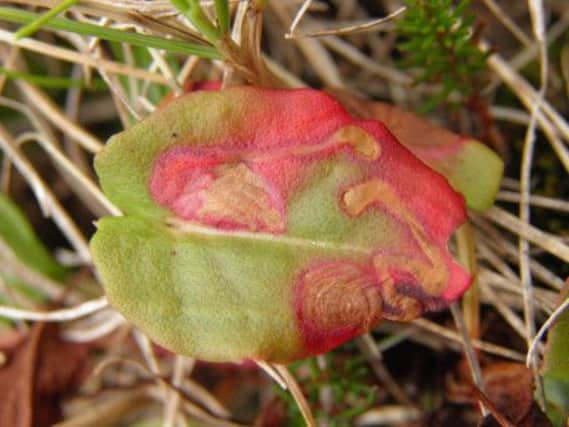Micro moth discovered at Giant’s Causeway


“I was leading a guided tour of the causeway and had knelt down to inspect a rare plant when I noticed the sorrel plant next to it had this distinctive design on its leaf,’ said Cliff. ‘It looked very much like a mini Danish pastry!”
What Cliff saw was the caterpillar stage of one of the world’s smallest moths – the Pygmy Sorrel moth– or Enteucha acetosae, to give it its Latin title. While the sorrel leaf housing Pygmy Sorrel moth caterpillars may have the appearance of damage or disease, the swirling red pattern is evidence of a much more intricate process. It is caused by the caterpillars eating and tunnelling their way between the waxy upper and lower layers – or epidermis - of the leaf.
Advertisement
Hide AdAdvertisement
Hide AdAn adult Pygmy Sorrel moth’s fully outstretched wings are 3mm tip to tip, about the width of the edge of a pound coin, and its larva is smaller yet. They belong to a group of moths called ‘leafminers’.
“Most of these moths can be identified by the shape of the tunnel (or mine) they make inside the leaf as they are munching along,” explained Cliff. “I knew straight away, simply from seeing the leaf, that this species hadn’t been recorded at the causeway before. A quick internet search confirmed that it is something quite rare.”
More online!
John McClean, from Butterfly Conservation Northern Ireland Branch, confirmed that Cliff’s hunch was right – in fact, this is the first incidence of the moth recorded in Northern Ireland. ‘It’s extraordinary that this tiny moth has managed to move around in an area with near constant wind, such as the Giant’s Causeway,’ said Cliff.
This recording of the Pygmy Sorrel moth joins reports of the rare Northern Colletes bee in the dunes of White Park Bay, and the Black-tailed Skimmer dragonfly spotted on heath close to the Giant’s Causeway, all occurring within the last 18 months.